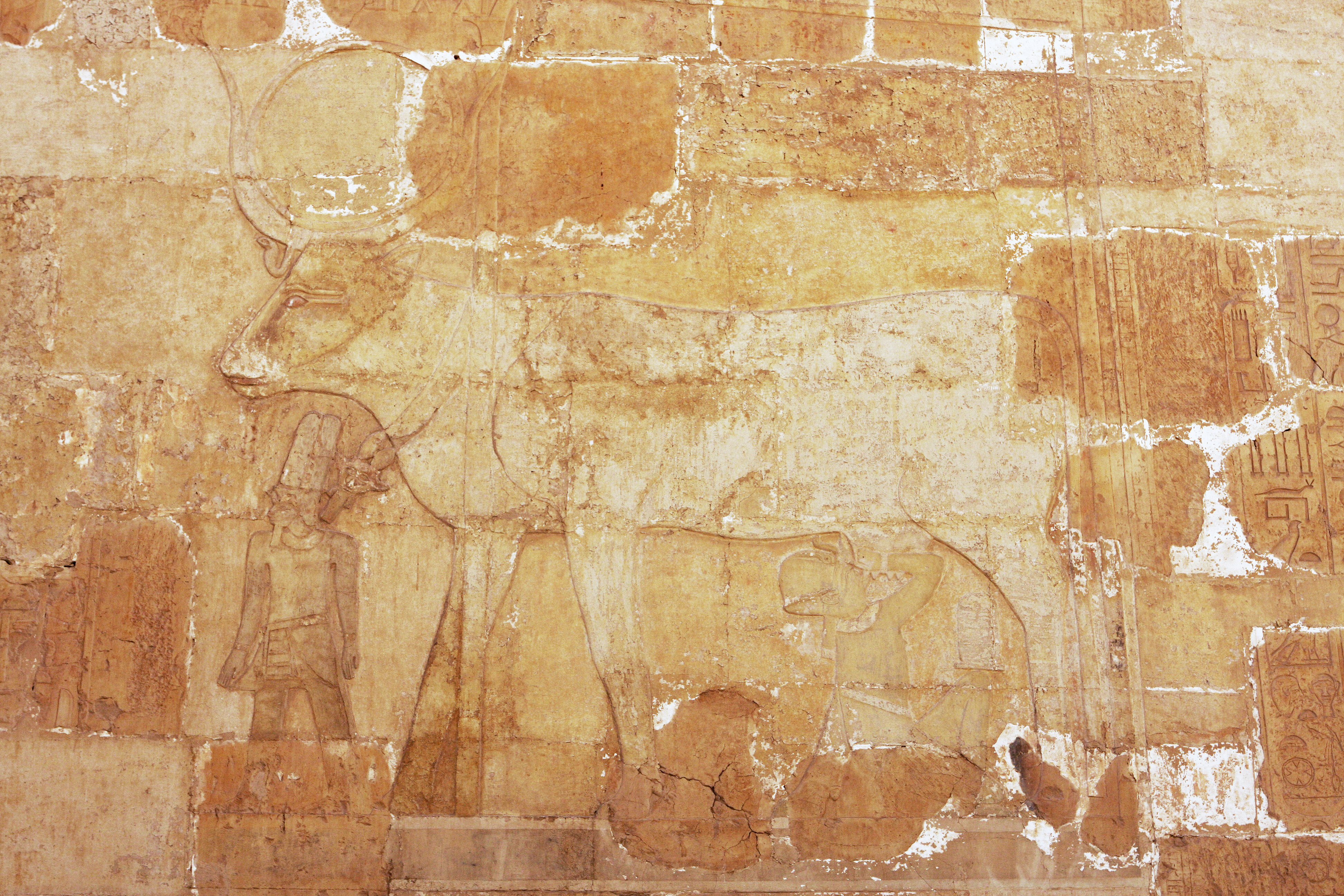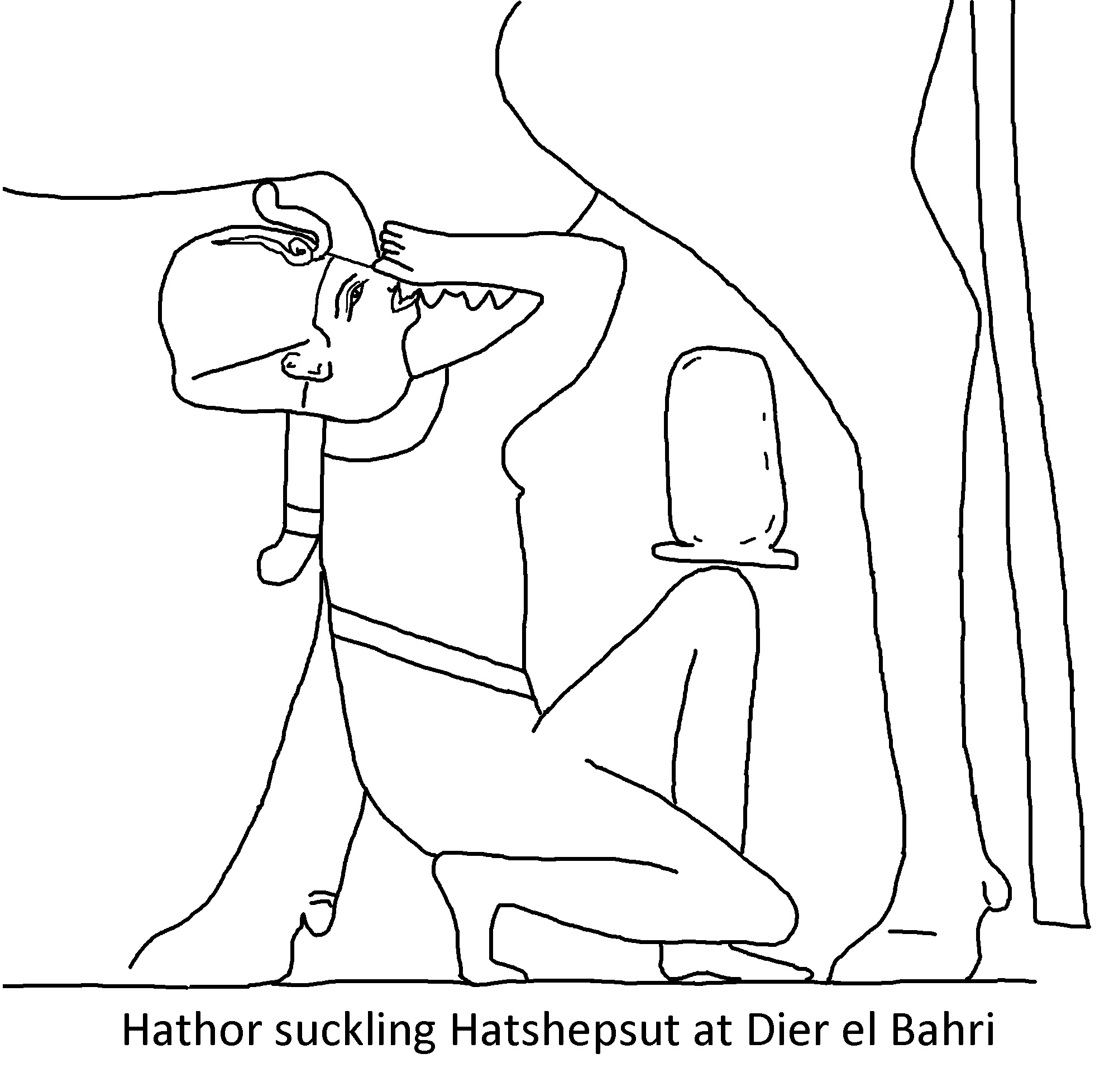
Monday, February 16, 2015
Hathor Suckling Hatshepsut
10:22am
Hathor at Deir el Bahri, traced from a photo by
Kyera Giannini

Two images of Hatshepsut had been scratched out.
A similar Hathor cow also in Deir el Bahri has a less damaged scene, revealing Hatshepsut standing in front of the goddess and also being suckled:

Photographed by Don McCrady, who gives "Creative Commons"
I took a trace of the suckling scene:
|
"The Hathor chapel of the Deir el-Bahari temple of Hatshepsut is the earliest known structure dedicated to that goddess on the west bank.12 Depicted in the form of a cow, she is titled Hathor of Dendera, Chieftainess of Thebes. As the protective and nourishing mother, she is shown licking the queen, as the cow does her calf.13 Cattle references are prominent in the accompanying texts, where Hathor is referred to as the Tjenenet cow and Apis is the Tjenen bull, "who engendered the heifers."14 Anubis is also cited here as the 'Lord of the Horned Ones, who resides in the land of the heifer.'15 The birth of Horus in the marshes is the underlying theme of these scenes. The goddess kisses the queen, 'as I did for Horus in the nest at Chemmis.' Hatshepsut, the child of the divine cow, is 'my Horus of Gold.'16 "Suckled by the divine cow, Hatshepsut receives the gifts of life and strength as well as the power of the transfigured Akhu.17" Lana Troy, "Religion and Cult during the Time of Thutmose III", Thutmose III: A New Biography, edited by Eric H. Cline and David B. O'Connor, (University of Michigan 2006), page 125 |
